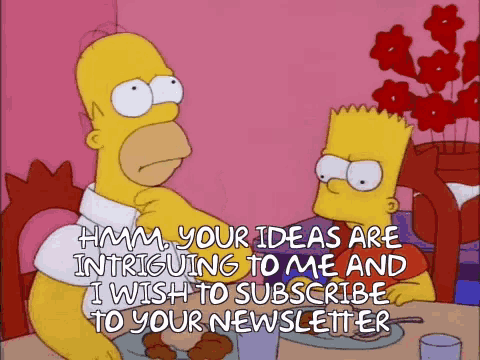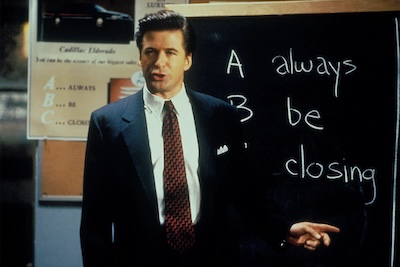The original score to Brady Corbet’s The Brutalist is as singular as the vision of the film itself. There is no doubt that Daniel Blumberg’s music belongs with this story of ambition, power, and the heartbreak that accompanies the drive of these characters. Blumberg did not approach this huge story in a traditional way, and his dedication to recording a lot of the score live makes it feel more connected to this sprawling tale as characters experience passionate hope and loss. Blumberg’s score is breathtakingly one-of-a-kind.
I couldn’t help but think about physical locations when I listened to Blumberg’s music separated from the images of the film. ‘Library’ glimmers with optimism as we hear the keys of the piano play through László Tóth working through his creation of Harrison Van Buren’s new reading space. A jazz club scene is full of boistrous, almost overwhelming sound. A track titled ‘Van Buren’s Estate’ feels sinister in the heaviness of the notes, and you wonder how you never put the pieces together after you know what happens later. Even the music dedicated to the building site and a ribbon cutting have distinct sounds.
“Space was something Brady and I discussed from the start with the script,” Blumberg says. “One of my first notes was what spaces we were going to be shooting in and how to think about capturing the reality of that on the set. I saw those images of them shooting in Carrara, and I literally wanted to record in that space. Initially, it was one of the reasons why I thought the piano would be a good instrument to marry to this story. I kept thinking of the physicality of a grand piano, which is so physically huge, so there’s different reverbs you can get within the instrument and, along with that, different perspectives of the instrument in the space. Space was definitely one of the considerations sonically.
We did a lot of work with the jazz scene, because everyone was worried about the sound in the room. When I got there, I immediately knew that I wanted the band to be playuing and recording live, because it sounded great. I ended up having a huge dialogue with the sound designers and Steve Single about the building sites we had. The trumpets were doing construction-esque sounds with Axel Dörner on the trumpet and Simon Seeger on the tuba that spoke to the sounds of things on a site like drills.”
Blumberg admits that he decided to work with instruments that he wasn’t even familiar with, and he plays with an instrument’s loudness, clarity, and frequency. With some of the brass instruments, Blumberg studied how they could be used to enhance the story, and the tuba gets some time to shine.

“It is underappreciated,” he says. “I’ve never worked with a tuba before this, or brass in general. One of the things that was new to me was that they can’t play forever. They have to have breaks, because it’s quite intense on the mouth, and we had some really hardcore players. Even Simon Seeger. I was with him in Marseille in his rehearsal space, and I was taking the piss out of him, because, after a while, you get tired. With the trumpet, there’s dribble coming out of it–they’re peculiar instruments actually. Tuba is great for film. Low instruments are great, especially when there’s lots of narration. You can slip them in under that whereas, with a trumpet, you have to be really careful [with] the dialogue since it’s a similar frequency.”
The piano is key to a lot of the inner struggle of Adrien Brody’s character, and you will find that to be a gorgeous, tender anchor for the character. The instrument was one that Blumberg gravitated towards after he read Corbet’s script, but he wanted to use it in different ways. The prepared piano is an instrument that finds objects wedged or nailed to hit the strings, and the composer thought it would assist in the aural journey of the construction itself. On the film’s soundtrack, the entry titled ‘Construction’ shows off rhythm and a measured layering that mounts unimaginable tension not usually associated with the building of a structure.
“I thought of the piano intially, but it was particularly prepared piano with John Tilbury,” Blumberg says. “It’s quite a cartoony relationship to making a film about construction, but sonically, it felt right. We talked about not having too much ornamentation in the music in general, and I think one of the things was trying to make something so dynamic and cast but with as little means as possible. I love the way that the piano could have this really percussive side of it with the prepared piano, but there’s also this very intimate, melodic, melancholic playing that John has when he’s playing as well. I played the Erzsébet one, which is a bit more classic and romantic, but it felt like something that I could rely on to take us through the whole film. There’s an incredible pianist named Sophie Agnel, an artist based in Paris, and she just plays those strings like you see John, and she has a bag of different objects like bouncing balls on the strings. It literally sounds like a strings section–it’s magical. And seeing that made me very excited to use the instrument.”
Much has been written about Blumberg’s trio of entrance overtures as we welcome László to America–we are literally seeing him escape the Holocaust to a new life. What should be getting more notice, though, is how Corbet wanted certain musical sections to be playing as Brody and the other actors played in the space. It’s visceral and feels connected to his body as László jumps for joy as the Statue of Liberty looks on with approval.
“Brady wanted to shoot certain scenes to the demos of the music,” he says. “I was living with him in Budapest, and once they shot that to the music, you’re kind of wed to that idea. He wanted to shoot the bus to music as well. I knew it would be a static shot, but when I was on set we’d put together the demo. Brady was sitting next to me so I could get the timings right for when László goes up the stairs and there’s this blinding lkight when he looks through the portal. That was an example of us all collaborating on the same piece of work and a successful example of why having the dialogue and coming together can create something that functions. You’re trying to create feelings for the audience or to take them inside in different ways. The camera could actually move to the beat or move against the beat, so you’re immediately connected to the the finish.”
The track titled ‘Heroin’ features a kind of yearning that is paired well with László’s struggle to keep everything in his life afloat. Horns descend in volume while a scratchiness plays over it. It’s sad and tragic as we consider this artist’s struggle with addiction and in his marriage to Erzsébet. It vibrates as we can hear László’s artistry trying to break through once more with the strokes of the piano.
“That’s one of the pieces of music that I’m really proud of,” he says. “It was the first session with Axel Dörner and his partner, Carina [Khorkhordina], who plays trumpet as well. We met Joel Grip’s painting studio in Berlin, and it was Carina on the left, Axel on the rigfht, and Joel standing in the middle. I was playing piano behind them. I showed them Erzsébet’s theme, and I showed them the in-camera effect of the VistaVision. The way that they tricked the camera to sort of spread light aroun the celluloid in quite a specific way, and that was the starting point. Then we played the theme very closely, and then went off into improvisation and then came back to the theme. There was a moment during that piece of playing, which was early in the edit, where I felt that I had Brady in my head in these sessions and these conversations.
When I got back to London, I went to his hotel and played it for him, and it was a great combination of the blueprint of what I try to do with musicians, where I bring something quite specific in terms of a theme and a melody to a scene, which is also very specific. They moved it around as well, the picture to the music. It was the idea when you enter the second half of the film. you hear this rendition of that theme in its totality. It’s this euphoric moment when they’re meeting at the train station, and he’s grinded down throughout the whole second half. This was a moment where it sort of disintegrates, but at the same time, it has to be very sexy.”
The Brualist is playing in theaters.







![‘Pirates! The Penzance Musical’ Breakout Star Nicholas Barasch Discusses Performing On The Tonys With Seven Stitches On His Face [VIDEO]](https://thecontending.com/wp-content/uploads/2025/06/Pirates0011r-120x86.jpg)

